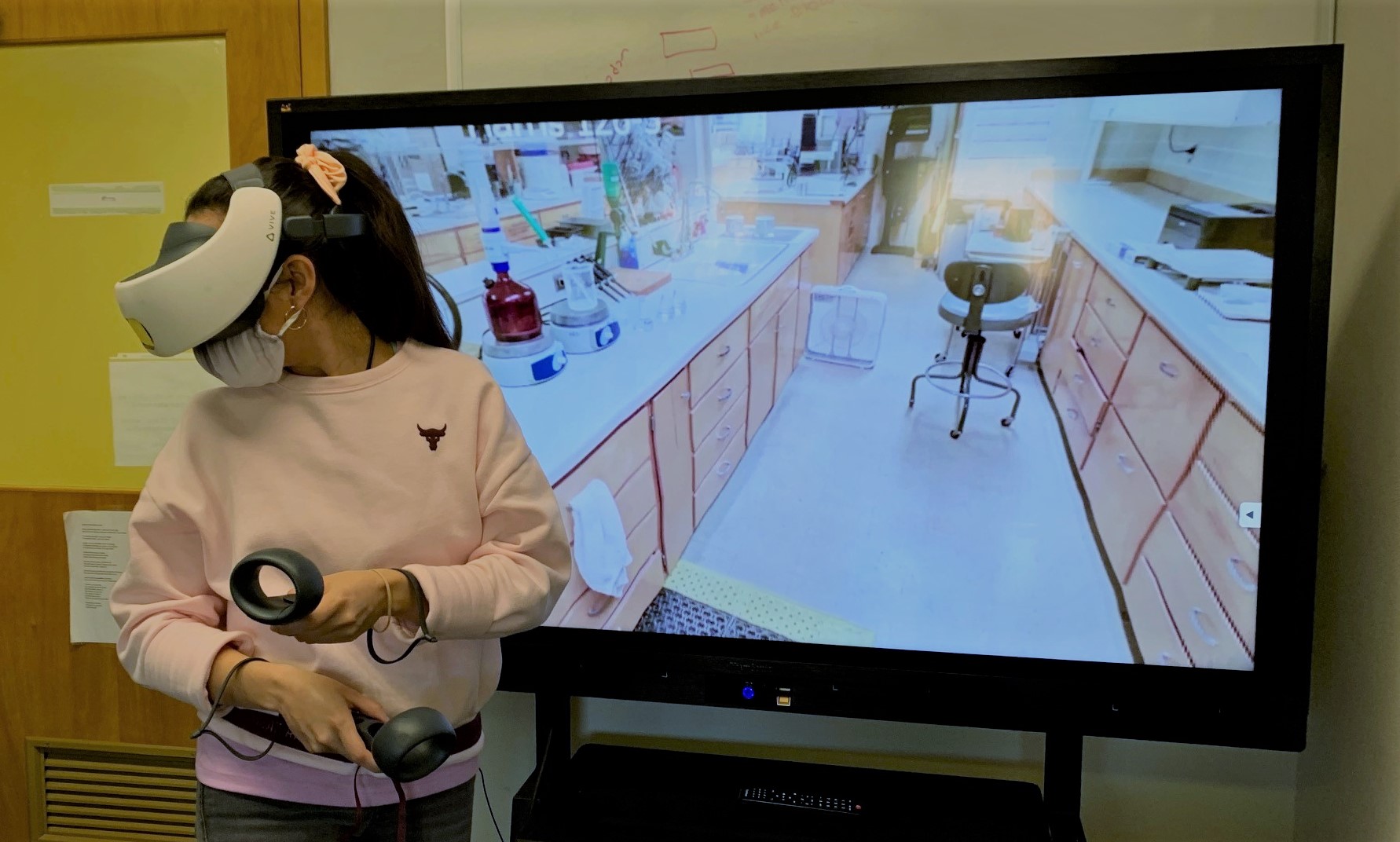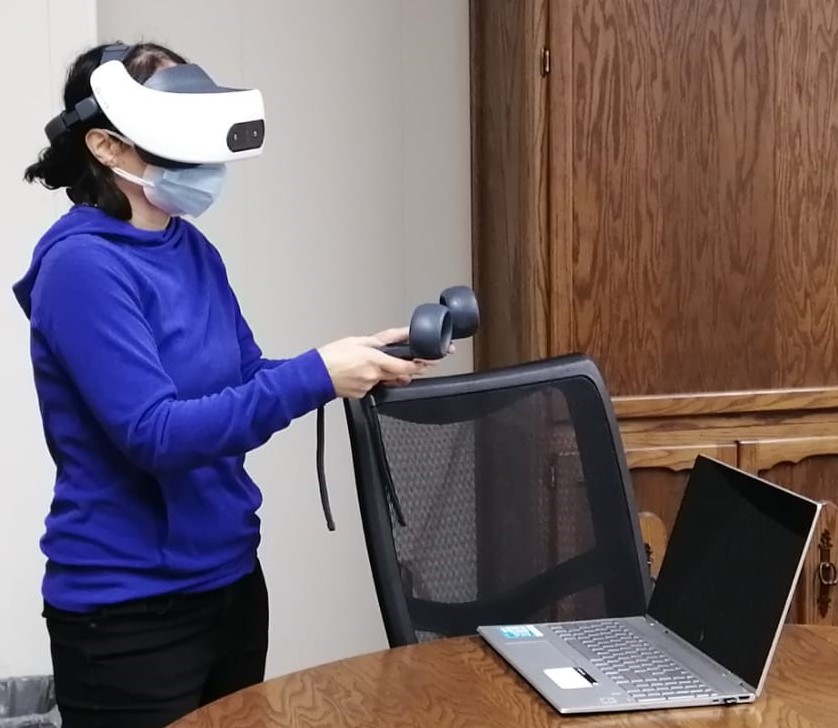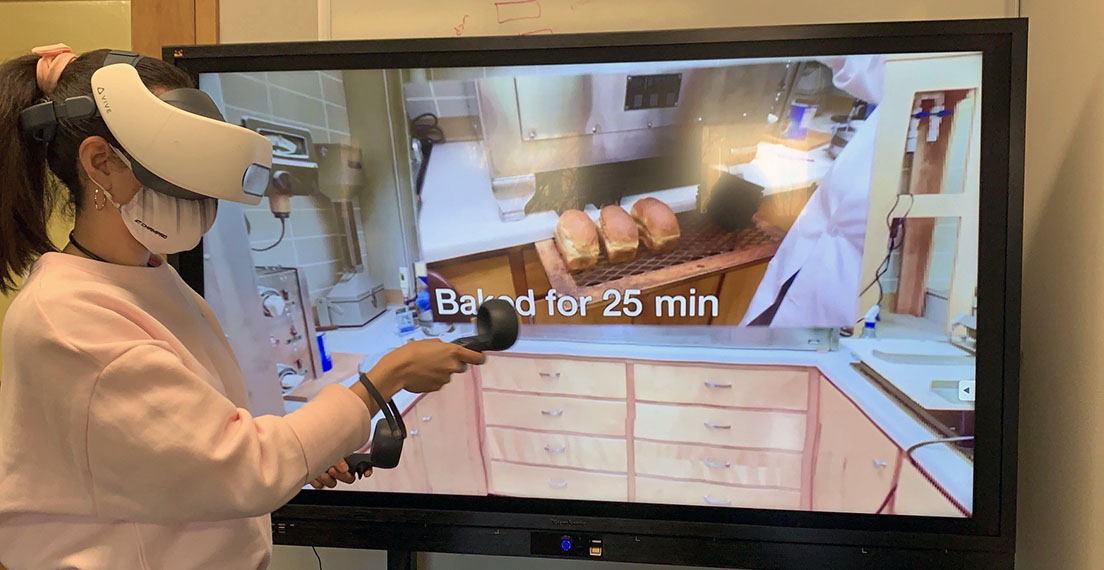Throughout 2021, the U.S. Wheat Associates (USW) Wheat Letter is featuring the many stories of the people, processes and passions that go into producing and delivering high quality U.S. wheat to the world. Our focus will be on quality that starts with dedicated public and private wheat breeders and researchers, is fostered by hard-working farm families, is maintained by grain handlers and observed in hundreds of wholesome, nutritious wheat foods.
“Virtual reality is transforming research and outreach activities in the Plant Sciences Department at North Dakota State University, and the wave is just beginning,” says Dr. Senay Simsek, professor and director of the Wheat Quality and Carbohydrate Research Program.
Virtual reality is a three-dimensional, computer-generated experience that allows a person to interact with spaces and objects within an entirely virtual environment. Simsek worked with Be More Colorful, a virtual reality solutions firm in Fargo, N.D., that created 360-degree images of the wheat quality and carbohydrate labs. Then they embedded informational videos provided by Simsek about the lab tests and equipment into the 360-degree images to create a complete virtual tour of the wheat quality and carbohydrate chemistry laboratories.
Designated users of this technology access the virtual tours using a VR headset or as a desktop experience in any web browser. During the tour, they experience wheat quality facilities in 3D, which creates the feeling that they are visiting in person, even though they may be thousands of miles away. Now, anyone can explore from the comfort of their home or office how wheat kernels are tested for quality, how wheat is milled, how flour and dough samples are analyzed, how bread is baked for end-product quality, and many other tests.

The VR tours containing Simsek’s training videos are not publicly available but the 360-degree images of the labs can be viewed at https://tours.bemorecolorful.com/v/rNj79kPE1Jd. Move the computer mouse around to view different parts of the room. Click the drop-down menu in the top left corner of the image to access other rooms. To learn more about wheat quality in the world of VR, contact Dr. Senay Simsek at [email protected].

Simsek often meets with various trade teams and farmer groups, and visits K-12 schools. Now, she can utilize VR technology to show what type of research she is conducting at NDSU. “Leveraging virtual reality helps enhance the research and outreach experiences for the people we work with,” she says.
Simsek implemented the browser-based 3D experience during this year’s Hard Red Spring Wheat Crop Quality meeting. Incorporating the 3D tour experience at the virtual crop quality meetings was met with great appreciation by the attendees.
“Virtual reality is offering some promising benefits to our research and outreach capabilities,” says Simsek. She believes the trend will not slow down any time soon, so researchers and other should expect to see more virtual reality technology enter their lives and laboratories in the future.
Dr. Simsek contributed this article to Wheat Letter, with editing support from Kamie Beeson, North Dakota State University. In addition, Dr. Simsek recently recorded two video presentations on how U.S. hard red spring (HRS) wheat can reduce the need for additives in a “Clean Label” end-product, and on 2020 U.S. HRS Crop Quality.


